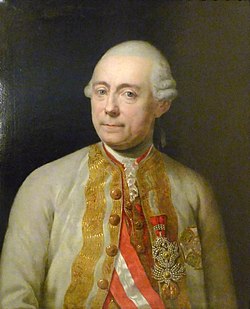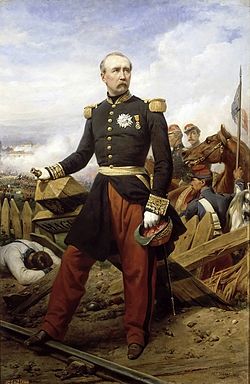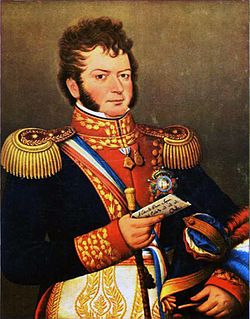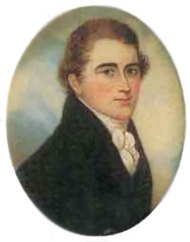The British colonies of Australia and New Zealand suffered a series of 'war scares' during the 19th century from perceived threats from France and Russia. In 1870, when the last British troops left, defence became the responsibility of locally raised colonial forces.
New Zealand
Among the British fencibles (British army soldiers given land) in 1847 many of them were Irishmen. The first Irish unit formed was in New Zealand – the Christchurch Royal Irish Rifle Volunteers were gazetted on 18 November 1868, re-designated No. 2 (Royal Irish) Company Christchurch R.V. on 4 April 1871, and then disbanded on 11 August 1874.
On 29 April 1885, a meeting was held in Christchurch, New Zealand and 95 members of the Irish community applied to form an Irish volunteer corps. That was accepted on 30 April 1885 as the Canterbury Irish Rifle Volunteers.
On 1 June 1892, they were amalgamated with the Sydenham R.V. to form the Christchurch City R.V., gazetted 22 July 1892.
New Zealand's Dunedin Irish R.V. were formed on 7 May 1885, when 189 men offered their services. The Dunedin Irish R.V. became part of the 1st Battalion Otago R.V. on 25 January 1886 and were disbanded on 13 September 1893.
One other Irish Corps was to be formed in the South Island of New Zealand, the Southland Irish R.V., were formed at Invercargill and accepted 10 June 1885 as an Honorary Corps. On 7 August 1885, it applied to be formed into a Garrison Corps and then disbanded on 9 July 1886.
Another N.Z. Irish corps was proposed during a 'war scare' in 1885, the Temuka Irish Rifles, on 13 June 1885, but the proposal was abandoned when the government deemed it improbable that hostilities would ensue.
Another Irish corps was proposed on 3 April 1887 and was accepted on 24 June as the Auckland Royal Irish R. V. On 13 August 1887, they were posted to the 3rd Battalion Auckland R.V. When inspected on 6 October 1889, they had a total strength of 93 officers and men and they were disbanded on 5 March 1892.
The last Irish Corps to be formed in New Zealand was the Irish R.V. (Wanganui), accepted 22 October 1901. They were attached to the 2nd Battalion Wellington (West Coast) R.V. and 'J' Company, formed 16 April 1902, becoming 'I' Company on 1 November 1904.
The N.Z. Defence Act of 1911 saw an end to the volunteer system, the Wanganui Irish (by then 'H' Company) were absorbed into the new territorial system when the 2nd Battalion Wellington (West Coast) R.V. were re-designated, 7th Regiment (Wellington West Coast Rifles) on 17 March 1911.
An Irish Caubeen was worn by the Nelson, Marlborough, and West Coast Regiment, which came about after a regimental alliance with the Royal Irish Fusiliers, which took place on 23 September 1949. The blue caubeen and green hackle of the Royal Irish Fusiliers were formally presented to the NMWC Regiment at a Barrosa Day parade in 1961 but may have been worn on special anniversaries and parades before that. On 24 January 1964, the Ist Battalion Nelson, Marlborough, and West Coast Regiment amalgamated into the 2nd Battalion (Canterbury, Nelson, Marlborough, West Coast) Royal New Zealand Infantry Regiment. N.Z. Army Headquarters ruled that only "A" and "B" Companies of the new regiment were to wear the caubeen and hackle on dates significant to the regiment. That was found to be unworkable and so the caubeen and hackle were not worn until 1968 when the ruling was changed. Only officers and warrant officers seem to have worn the caubeen during formal parades, and the RNZIR cedar green beret was worn for everyday use. By the early 1990s. all ranks were wearing the caubeen and hackle. On the formation of the Royal Irish Rangers in 1969, the green caubeen of the Irish Rangers was adopted by the New Zealanders. The 2RNZIR discontinued wearing the caubeen in the 1990s due to financial constraints, and it was replaced by the cedar green beret. In November 1998, the NZ mounted rifles "lemon-squeezer" hat was introduced army-wide and was worn for formal parades, while the beret was worn for everyday use. In 1999, the rifle green beret was adopted for the New Zealand army and was phased-in in late 2002. The 2nd (Canterbury, Nelson, Marlborough, West Coast) Battalion Group, as the unit was known then, wore the green hackle on the left side of the mounted rifle hat. That was to signify the continued association with the Royal Irish Regiment.
Australia (pre-Federation)
Queensland
An offer to form an Irish Corps in the British colony of Queensland, Australia, had been rejected in 1862.
Eighteen years after the formation of the first Irish Corps in New Zealand, a Queensland Irish Volunteer Corps were proposed on 18 February 1887 and gazetted on 24 February 1887 as 'A' Company Queensland Irish Rifle Corps.
Established at Peel Street, South Brisbane with three officers and 100 other ranks, 'B' and 'C' companies quickly followed, formed on 11 March 1887 at Valley, North Brisbane and on 22 March 1887 at Petrie Terrace, West Brisbane.
'D' Company was formed at Gympie on 14 November 1888 with an establishment of three officers and 90 other ranks. The application to form this unit had been submitted on 27 May 1887. The application to form a company at Ipswich was submitted on 26 August 1889. They were gazetted on 4 September 1889 as 'E' Company and had a strength of three officers and 90 other ranks.
Gazetted the same day were 'F' Company established at Woolloongabba, East Brisbane, [4] with three officers and 90 other ranks.
The final company raised was 'G' Company at Maryborough and again with three officers and 90 other ranks, on 4 December 1889.
An application in March 1887, signed by over 100 men willing to form an Irish Corps at Rockhampton came to nothing.
'G' Company at Maryborough was the first to disband on 6 August 1891, followed by 'D' Company at Gympie on 7 November 1894.
In a re-organisation during 1896, the Queensland Irish Volunteer Corps were designated 3rd (Queensland Irish) Battalion, Regiment of Queensland Rifles and 'A', 'B', 'C', 'E' and 'F' companies became 'I' ,'J', 'K', 'M', and 'N' companies. On 30 July 1897, 'I', 'K', and 'M' Companies were disbanded; 'L' and 'N' companies were disbanded by August the following year, and this brought to an end the Volunteer Corps in Queensland.
New South Wales
In November 1895, a meeting was held in Sydney Town Hall when it was decided to form an Irish Rifle Corps.
These companies were established and gazetted on 5 March 1896, as the New South Wales Irish Rifles. They were grouped together with St George Rifles and the Scottish Rifles to form an administrative regiment, designated the 5th (Union Volunteer) New South Wales Infantry Regiment on 20 June 1896. Another Irish company was formed in Sydney in 1998.
http://www.planetfigure.com/threads/australia-nsw-irish-rifle-regiment-1900.79431/
NSW Irish Rifles – belt-buckle
http://www.diggerhistory.info/pages-conflicts-periods/other/irish_rifle.htm
On 1 July 1899, these national companies split to form their own distinct regiments, and the Irish were re-designated as the 8th Union Volunteer Infantry Regiment (Irish Rifles).
Badges of the 8th Union Volunteers Infantry Regiment (Irish Rifles)
https://harrowercollection.com.au/33rd-infantry-regiment/
For administrative purposes, two non-Irish companies from the Illawarra district (one at Kogarah and one at Bulli) were attached.
A further Irish Company was formed at Newcastle, the men being sworn in during June 1900.
Twenty-three men of the 8th (Irish Rifles) fought in the Boer War.
The 8th Union Volunteers Infantry Regiment (Irish Rifles) was re-designated NSW Irish Rifle Regiment (Volunteers) in 1903, and then became the 1st Battalion NSW Irish Rifle Regiment in 1908.
A major re-organisation in 1912 saw the name change to 33rd Infantry Regiment and, in yet another re-organisation in 1918, changed to the 55th Battalion.
In 1927 the old NSW Irish Rifles title was revived. The 'Irish connection' finally came to an end in 1930, when the regiment was re-designated as the NSW Rifle Regiment.
NSW Irish Rifles ('Vice Regal' cigarette-card)
https://sites.google.com/site/irishregimentsoftheempire/australia-and-new-zealand
New South Wales Irish Rifles - hat badge variations
https://sites.google.com/site/irishregimentsoftheempire/australia-and-new-%5B%5D
South Australia
The South Australian Register, dated 13 February 1900, carried the following public notice: "A meeting of all interested in the formation of an Irish Rifle Corps will be held on Tuesday 20 February at 8pm in the town hall."
Afterwards 157 names of volunteers were taken, and after selection, were to become 'F' (Irish) Company, 1st Battalion Adelaide Rifles. At the formation of the Irish Company, it was suggested that a green uniform be worn, but no distinctive uniform was adopted. although a shamrock worked from black braid was worn on the uniform sleeves, and hand-engraved brass harp collar badges were worn. They were worn until January 1910, when the company was ordered to discontinue wearing them, which they did under protest. That was done to secure uniformity of dress with the other companies in the 10th AIR. A green stripe an inch wide was also approved to be worn on the trouser seams, but was later disallowed.
Victoria
Attempts had been made to form other Irish Corps. A five hundred strong Irish Australian Volunteer Corps was proposed in Melbourne Victoria in April 1885. A number of meetings were held at St. Patrick's Cathedral Hall.
Australia (post-Federation)
With the formation of the Australian Commonwealth military forces in 1903, the Adelaide Rifles became part of the newly formed 10th Australian Infantry Regiment. That had been the last Irish unit to be formed in Australia.
Steps were also taken in May 1901 and May 1910, to form an Irish Australian Regiment in Melbourne, and again in 1941. An Irish Volunteer Corps was proposed at a meeting held in the dining rooms of the Shamrock Hotel, in Perth Western Australia on 18 April 1900. Another Irish corps was proposed in Perth in 1904. An Irish regiment was suggested at Bendigo Victoria in April 1906, and a company of Irish Rifles was considered at Broken Hill NSW in April 1910. An Irish corps was also proposed in Queensland, as part of the 9th Australian Infantry Regiment (Moreton) in 1906. Committees were often appointed, but the corps were never formed.
The 4th Battalion, Royal Australian Regiment (4 RAR); an infantry battalion formed on 1 February 1964, and renamed the 2nd Commando Regiment on 19 June 2009. 4 R.A.R. is affiliated with Britain's 4th Regiment of Foot Guards (The Irish Guards). The 4 R.A.R. regimental band use the same uniform as the Pipes and Drums of the Irish Guards. The 4 R.A.R. battalion subsequently served in Malaysia as part of the Far East Strategic Reserve from August 1965 to September 1967, and seeing active service in Borneo against the Indonesian army during the Indonesia-Malaysia confrontation. The battalion began its first 12-month tour of Vietnam on 1 June 1968, returning to Vietnam for its second tour in May 1971. From 1990 to 1993 many individual soldiers from the battalion served with the United Nations in Cambodia. In 1993, soldiers from the battalion were detached for operational service in Somalia. In May 1993, the battalion deployed troops to Cambodia. In 1994, the battalion deployed Rwanda. In 1996, a decision was made to convert 4 RAR to a special forces unit. On 1 February 1997, was renamed to 4 RAR (Commando). The unit conducted operations in East Timor and Iraq, and later lost soldiers killed-in-action during the war in Afghanistan.
2/4 RAR Irish Pipes and Drums https://24rarassociation.com/?page_id=1076 (see image 66)











